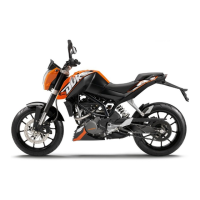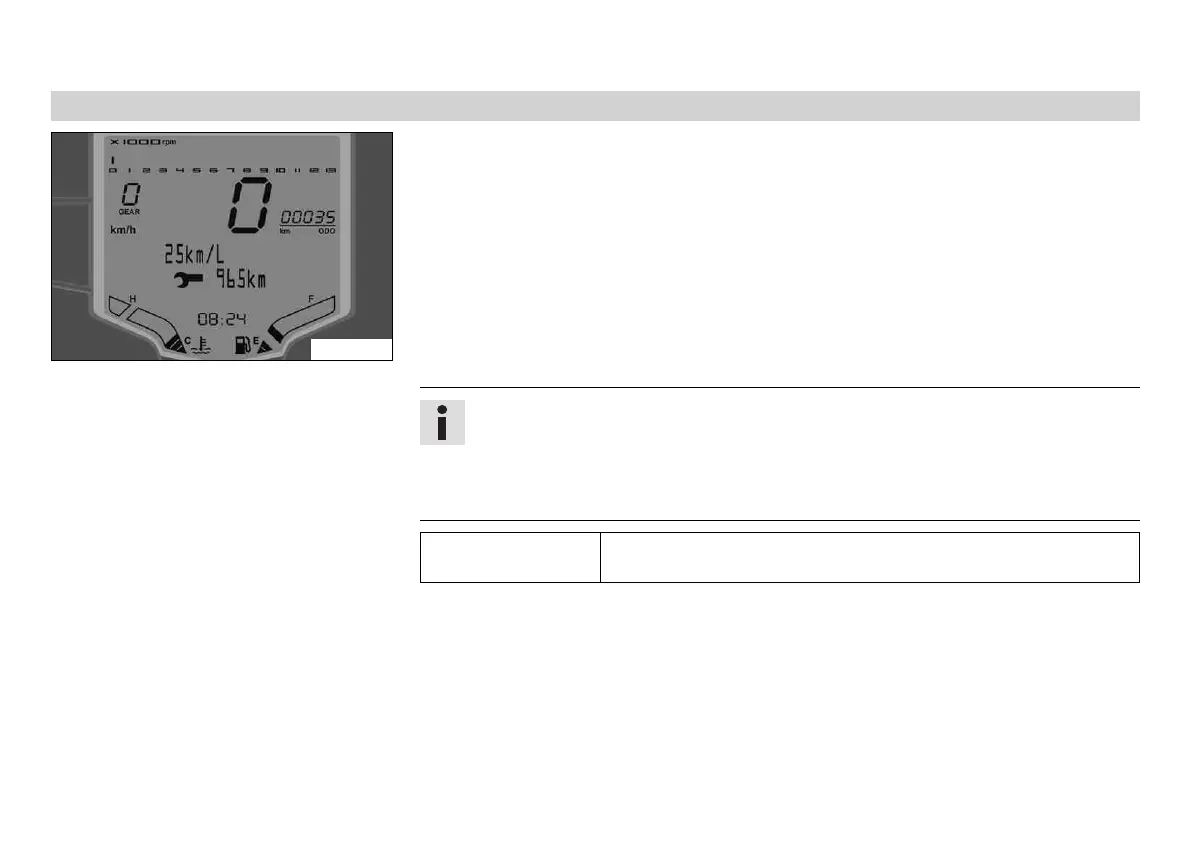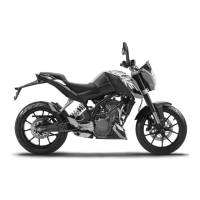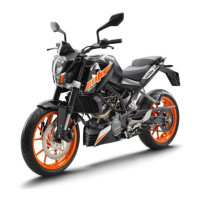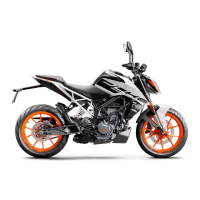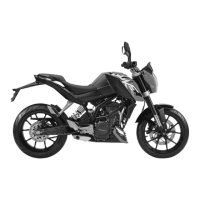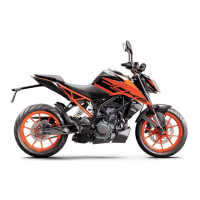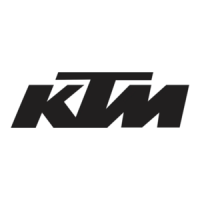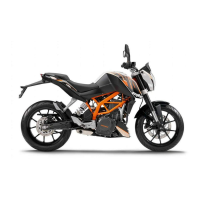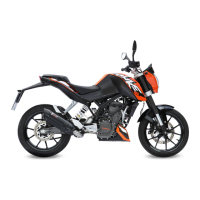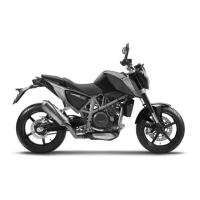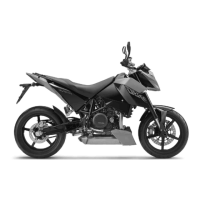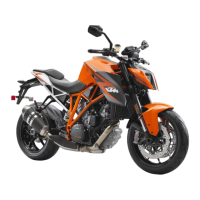6 CONTROLS 41
6.11.14 Average fuel consumption 2/service menu
401467-01
Condition
Alternative 1
• The ignition is on.
• The motorcycle is stationary.
Alternative 2
• The ignition is on.
• The motorcycle is moving.
– Press the SET button briefly and repeatedly until the desired info display appears.
The average fuel consumption 2 in km/L (or miles/L) and the distance to the next service
are displayed in this menu.
Info
The average fuel consumption 2 is displayed after several 100 meters of travel after
the ignition is switched on.
If the ignition was switched off for over 60 minutes, the display of the average fuel
consumption 2 is reset to 0.
Press the SET button
briefly.
Next display mode on the info display
